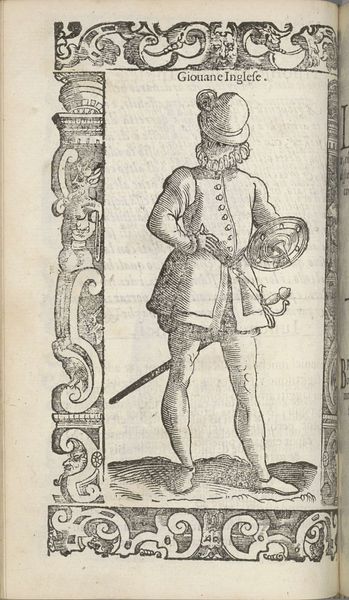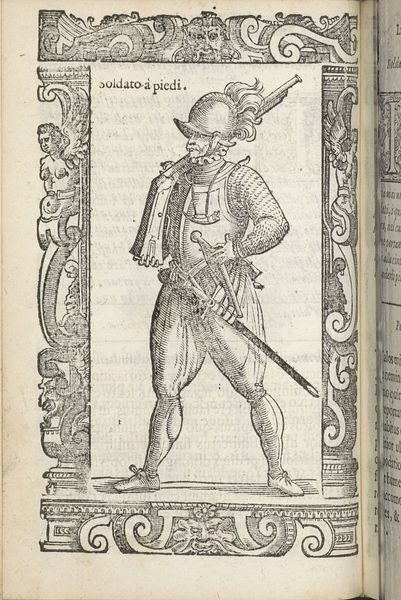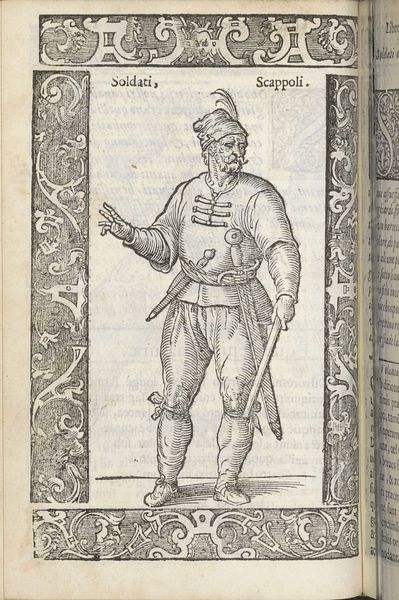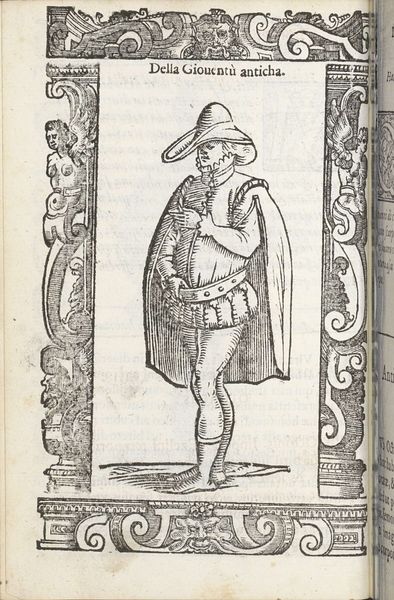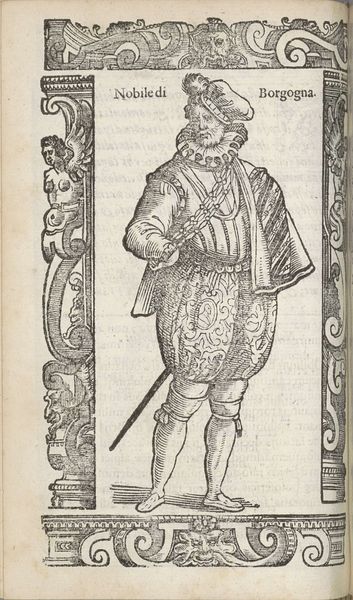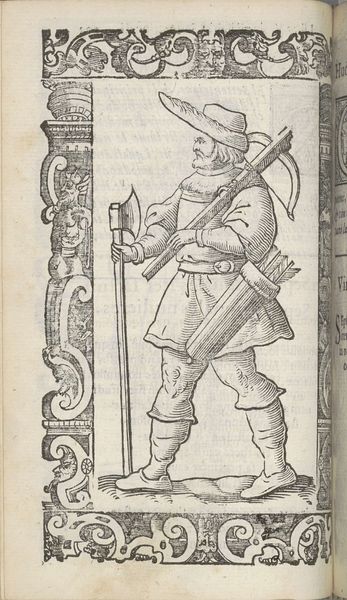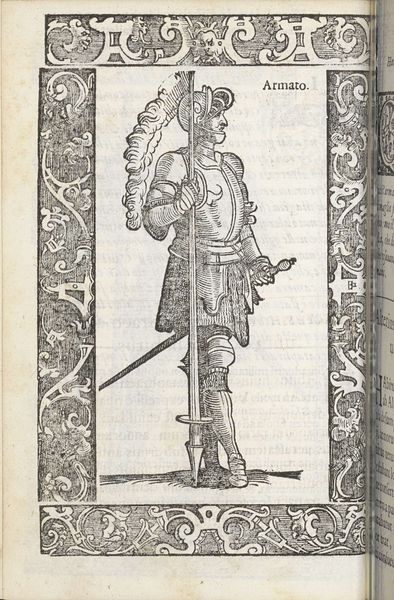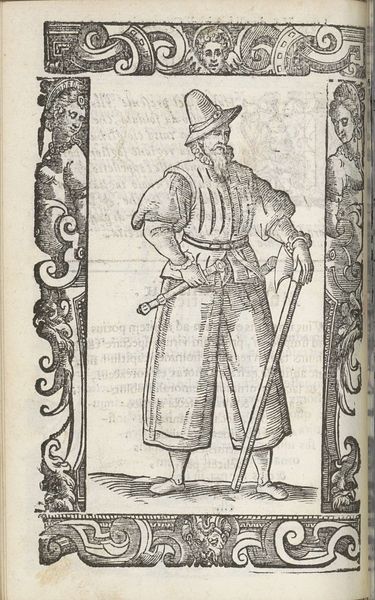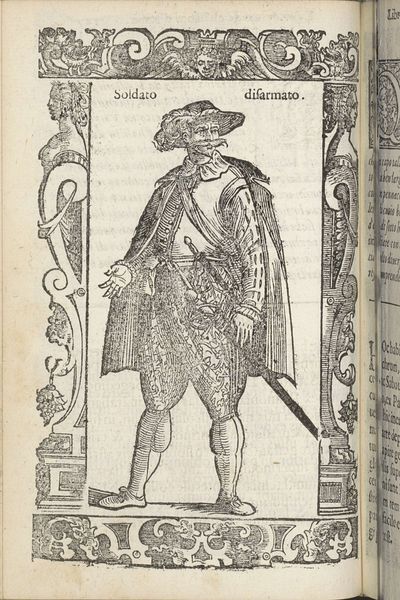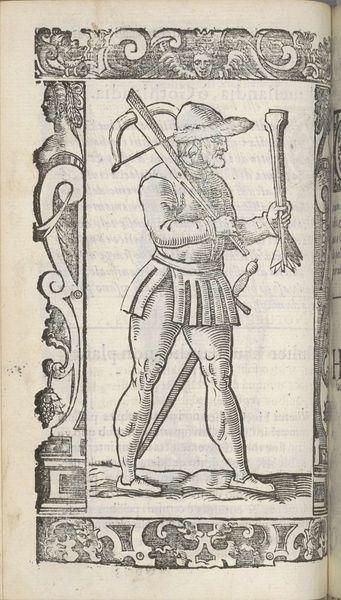
print, engraving
#
portrait
# print
#
pen sketch
#
mannerism
#
figuration
#
history-painting
#
italian-renaissance
#
engraving
Dimensions: height 167 mm, width 125 mm
Copyright: Rijks Museum: Open Domain
Curator: Ah, here we have a fascinating example of late 16th-century printmaking. This is Christoph Krieger's "Soldato armato," dating back to 1598. It’s an engraving, depicting an armed soldier. Editor: Immediately, I'm struck by the intricate detail, the weight of the armor conveyed through line and shadow. It feels... theatrical, almost like a costume more than functional battle gear. There’s a strange lightness, too, a dance-like pose. Curator: Precisely! Krieger's work often explores the performative aspects of power and status. Consider the labor involved in creating this print; the engraver’s meticulous craft, but also the social context that necessitated and valued such representations of military prowess. This was a period of intense social stratification, and printed images served as crucial tools for disseminating ideas about class, gender, and authority. Editor: You know, that’s a great point, thinking about printmaking as its own form of production, like blacksmithing for images. I imagine the lines etched with acid, a corrosive artistry, mirroring, perhaps, the corrosiveness of war itself? The ornamentation around the soldier, almost like stage dressing...does it enhance the prestige, or is there a subtle mockery implied? The soldier's somewhat foppish stance makes me think it could be satire? Curator: The question of intent is crucial. Krieger moved in circles where such complex negotiations of status would have been readily understood. The very act of commissioning or purchasing such an image signified a participation in that world, in those complex social negotiations. Also, note the materials themselves: paper, ink, and the copper plate which all had particular supply chains and costs to think about during this era. Editor: Right, the economics of display. Looking again, I can't shake the feeling of staged drama, but maybe the labor aspect heightens the respect given to that class. There's a balance, a tightrope walk between homage and... critique? Perhaps that ambiguity is its own strength, an openness to interpretation. Curator: A compelling thought. Ultimately, examining the socio-economic conditions alongside the image’s function allows for a deeper understanding of Krieger's artistic choices and its cultural impact. Editor: It leaves you thinking, which, really, is what art should do, right? Get you all caught up in these hidden layers of material and context. It's like armor, protecting something valuable underneath.
Comments
No comments
Be the first to comment and join the conversation on the ultimate creative platform.
